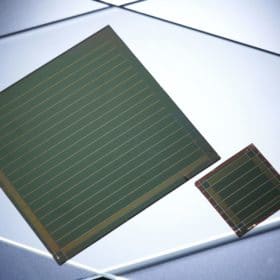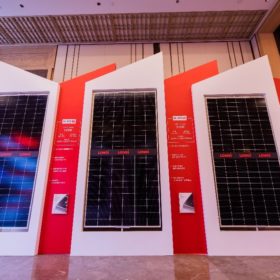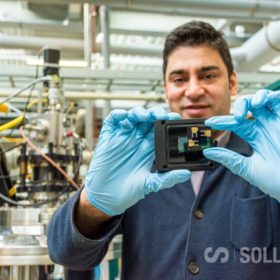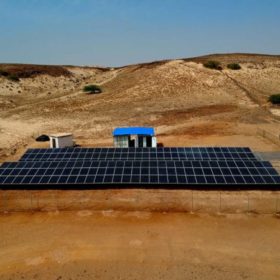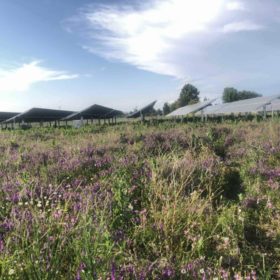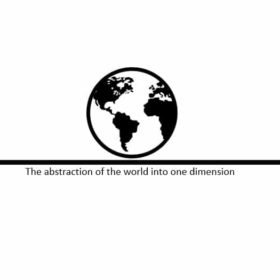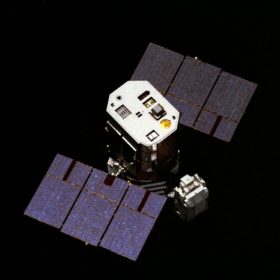Sungrow launches high-voltage battery and hybrid inverter for residential applications
The Chinese manufacturer will begin selling its new products in Australia and Europe. The hybrid inverter has an efficiency of up to 98.4% and the lithium iron phosphate battery features a storage capacity between 9.6 kWh and 102.4 kWh, depending on the number of modules.
German researchers overcome main challenge for perovskite PV modules
Researchers in Germany claim to have overcome the primary hurdle in the development of large-area perovskite PV modules – scaling up from the cell to the module level. They achieved an efficiency of up to 16.6% on a module surface of more than 50 centimetres squared, and 18% on a module with an area of 4 centimetres squared.
Longi unveils two PV modules for distributed generation
The two new products will be part of the Hi-MO4m panel series for rooftop applications. Their efficiency ranges from 19.2% to 21.2%.
Solliance hits record efficiency on perovskite/silicon tandem solar cell
The Dutch consortium has achieved the record result by combining, in a four-terminal tandem configuration, an 18.6% efficient highly near-infrared transparent perovskite with a prototype of a c-Si interdigitated back contact (IBC) silicon heteroJunction (SHJ) cell developed by Japanese electronics manufacturer Panasonic. The perovskite cell was also combined with other kinds of solar cells and other remarkable record efficiencies were hit.
PV-powered desalination system for water-poor, sun-rich rural areas
Italian start-up Genius Watter has developed a solar desalination solution that is claimed to be particularly suitable for remote areas with no connection to grid electricity. The system is able to produce up to 1,000 cubic meters of potable water per day at an opex of €0.20 per cubic meter.
Shaded solar parks found to be beneficial for pollinators and plants alike
Researchers in the US ascertained that the partial shading provided by solar parks creates a microclimate that favours the abundant growth of more varied flowers and pollinators. They also found that partial shading increases bloom abundance by delaying bloom timing, increasing forage for pollinators during the hot and dry late season.
Green hydrogen and the cable-pipeline dilemma
New research from Singapore has found that gas pipelines for the onshore transport of green hydrogen and the cables for the transport of electricity to produce it at a distant location have similar costs at a 4000 km transmission distance. For longer distances, gas pipelines were found to be cheaper than cables, although the electric lines are said to benefit from scaling up and higher utilisation. For both options, however, a currently too high hydrogen LCOE remains the biggest barrier to overcome.
First Solar claims lowest module degradation rate in the industry
The US cadmium telluride thin-film module maker said its Series 6 CuRe panels are able to retain 92% of its performance at the end of the 30-year warranty. The improved stability of the product was achieved by eliminating copper and placing Group V elements such as antimony or arsenic onto the tellurium crystal sites.
Space PV technology company acquired to ‘unlock notable market potential’
The company being acquired, Azur Space, produces triple-junction space solar cells with an average efficiency of up to 30% and is planning to develop ultra-thin solar cells with up to 35%.
Debate on alleged forced labour in Chinese PV industry heats up in Europe
Three Dutch political parties have brought the forced labour issue to Parliament and have asked the Minister for Foreign Trade and Development Cooperation, Sigrid Kaad, to report on the matter.


